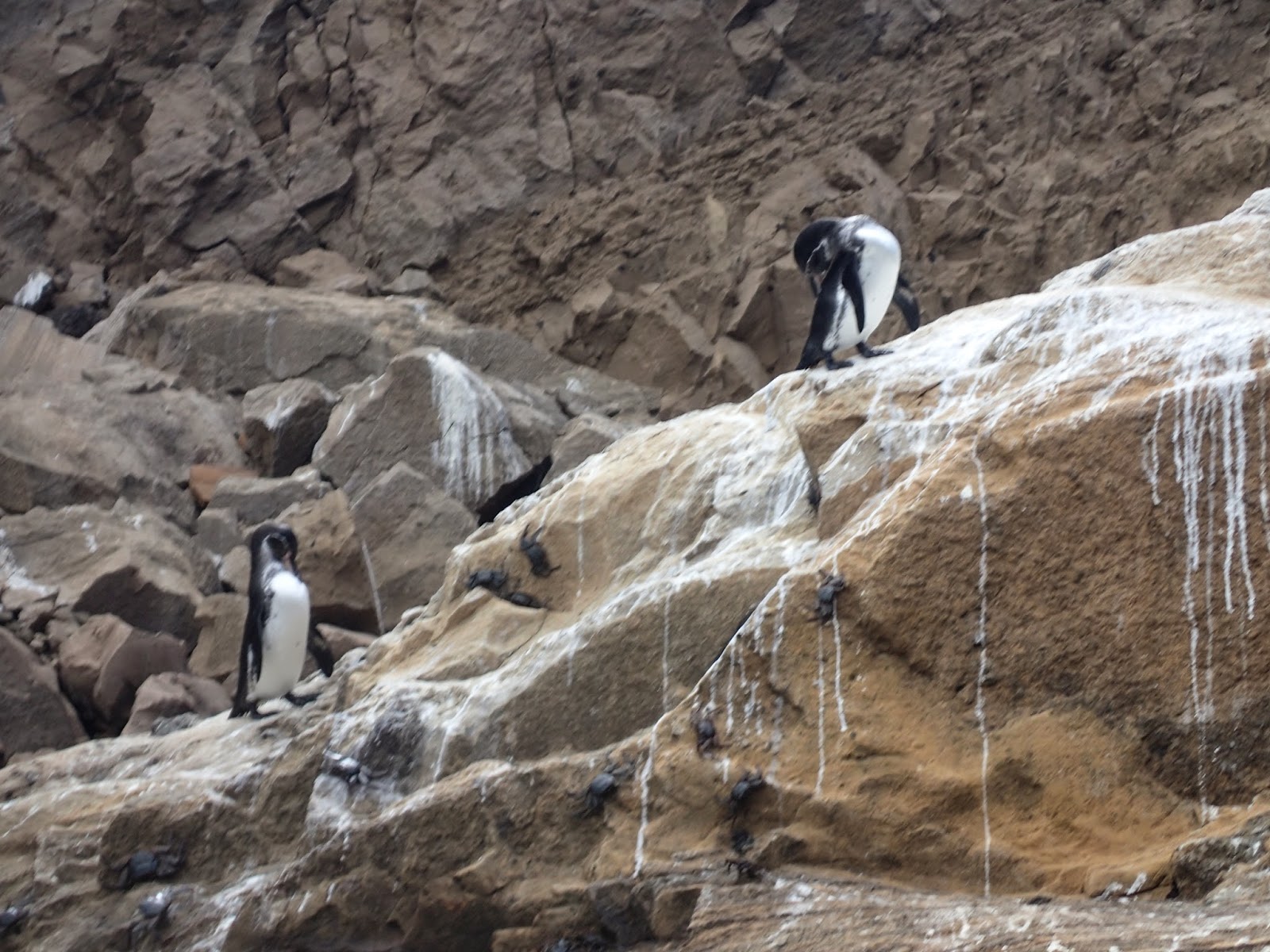We pulled up anchor at Rabida island late on the 21st and headed north up the east coast of the giant island Isabela. As we motored along the chef served up a delicious barbqued meal on a very windy deck. Later that night the crew and several guests enjoyed Karayoke in the bar. Renata led some of the Vancouver golfers in song.
Isabela with a land mass of 1771 square miles is by far the largest Galapagos island. It has one town, Puerto Villamil. The island is largely uninhabited. It is impossible to traverse the island on land. A very limited amount of marine traffic is able and allowed to travel around the island. We saw no other boats once we left Rabida.
 |
IGUANAS AND PENGUINS SHARE THE SHORE |
During the night our boat, The Galapagos Legend, travelled to the northern tip of Isabela, rounded the top and headed south down the Bolivar Channel. Much of the trip there was nothing but ocean to the west of us. It takes a hard driving sailboat with a good wind 35 days to reach the next islands, the Marquesas of French Polynesia.
The waters along the western coast of Isabela are much cooler than other Galapagos waters. The Humboldt current pushes up from the south and mixes with the equatorial waters. This mixture of waters provides the right mix of food for both tropical and southern animal species. Varied animal life thrives throughout the area.
Almost all of the Galapagos penguins, the only penguin species in the world living in the northern hemisphere, live on this western portion of Isabela. We were lucky to see many along the shore and also in the water.
 |
SALLY GO LIGHTLY |
 |
SHARING SPACE WITH A SEA LION |



No comments:
Post a Comment